Earlier today I tested the Fujifilm 45-100/4 against the Fuji 32-64/4. Now I’m running another test, this one against Fuji’s other medium format zoom, the 100-200/5.6. The 100-200 has some issues between 135 and 200 mm, but is a good performer at the short end. I tested both lenses at 100 mm.
The scene, at 100mm and f/4, with the 45-100/4:
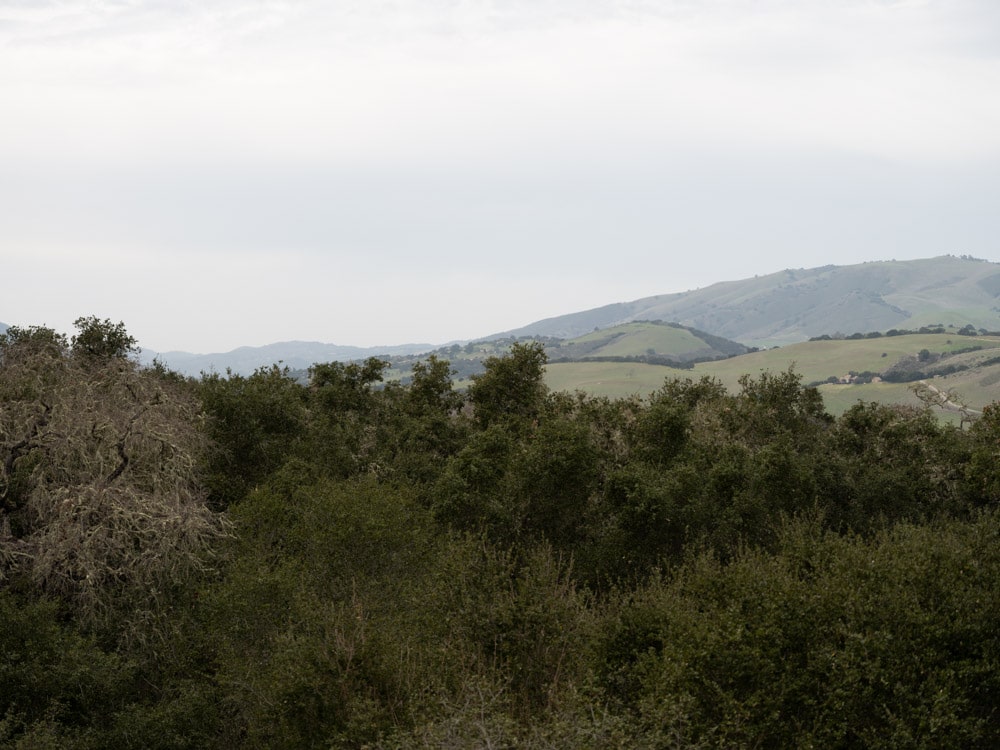
Here’s the test protocol:
- The heaviest RRS legs
- Arca Swiss C1 head
- ISO 100
- Shutter 1/400, electronic
- 2-second self-timer
- f/4, f/5.6, f/8 for the 45-100, f/5.6 and f/8 for the 100-200
- AF-S, medium spot size
- Focal length 45 and 64mm
- 3 sets of shots at each test condition
- Developed in Lightroom
- Picked best shot of each test condition
- Exposure boost of one stop for the f/5.6 images, and two stops for the f/8 ones
- Sharpening amount 20 radius 1, detail 0 (much less sharpening than the default)
- Adobe Color profile
We’ll look at some tight crops.
If you’ve seen these here before, just jump to the images. If not, I need to spend some time telling you how to interpret them. They’re at roughly 250% magnification, enlarged to 700 pixels high on export from Lightroom. If you just want a rough idea of the differences, just look at the images as displayed in-line in the posts. However, if you wish to compare these images in detail, you should view these images by clicking on them to see the source files, then set your browser for 100% zooming. Even better, download them and make Photoshop stacks.
No matter what you do, these crops are all going to look horrible. I’m blowing them up so much so that they will represent the original file after JPEG’s discrete cosine transform has had its way with them. If you want to get a good idea of what the images would look like printed, get far away from your monitor. No, farther than that. Put a bunch of the images up on the screen and back up until the best one starts to look good. Then look at the others. There’s another reason why these images won’t look like the best thing the camera/lens combination can deliver. They’re demosaiced with Lightroom. Lightroom is not awful, but for a particular image, there are usually better raw processors. I use Lr because it’s a de facto standard, because I know it well, and because it’s got good tools for dealing with groups of images.
Here’s how to use these highly-magnified crops. The dimensions of the GFX 100 sensor is 11648×8736 pixels. If we make a full-frame print from the GFX 100 on a printer with 360 pixels per inch native driver-level resolution, like the Epson inkjet printers, we’ll end up with a 32.3×24.3 inch print.The crops are 399×309 since it is a higher-resolution sensor, or a bit over an inch by a bit under an inch on our 32×24 inch print. Let’s imagine that you or your viewers are critical, and will look at the inch print from about 18 inches (conventional wisdom is that the distance would be a little greater than that, or 28 inches (the diagonal, but you did buy a high-resolution camera for a reason, didn’t you?).
The next step is dependent on your monitor pitch, which you may or may not know. Turns out, you don’t have to know it. Just take the 250% crops and view then at 1:1. How high are they? Get out your ruler and measure, or just guess. Let’s say they are 6 inches high. 6 inches is about 7 times the crop height on the paper, so in order to view the crops the way they’d look from 18 inches on the print is to view them from 7 times as far away, or 10.5 feet.
Everything here scales proportionately. If the image on your screen is bigger than 6 inches, increase your viewing distance by the ratio of your image height to 6 inches. If you think your viewers are going to almost get their nose to that print and look at it from six inches, divide that 10.5 feet by 3, and look at the image on the monitor from three and a half feet away.
In the center:
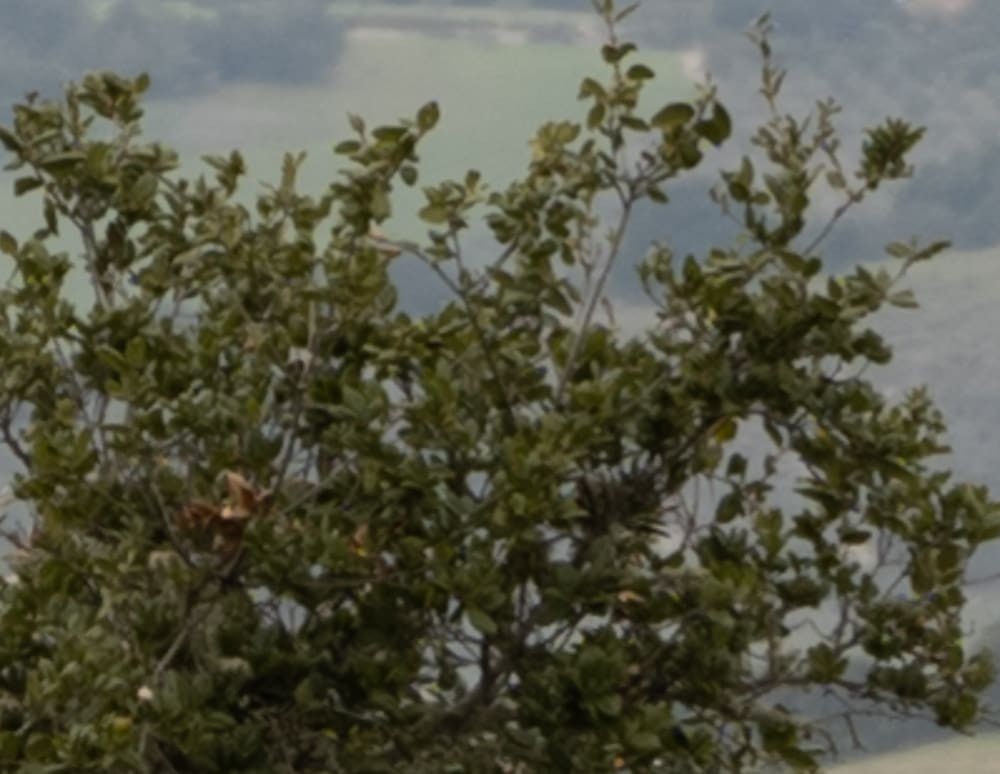
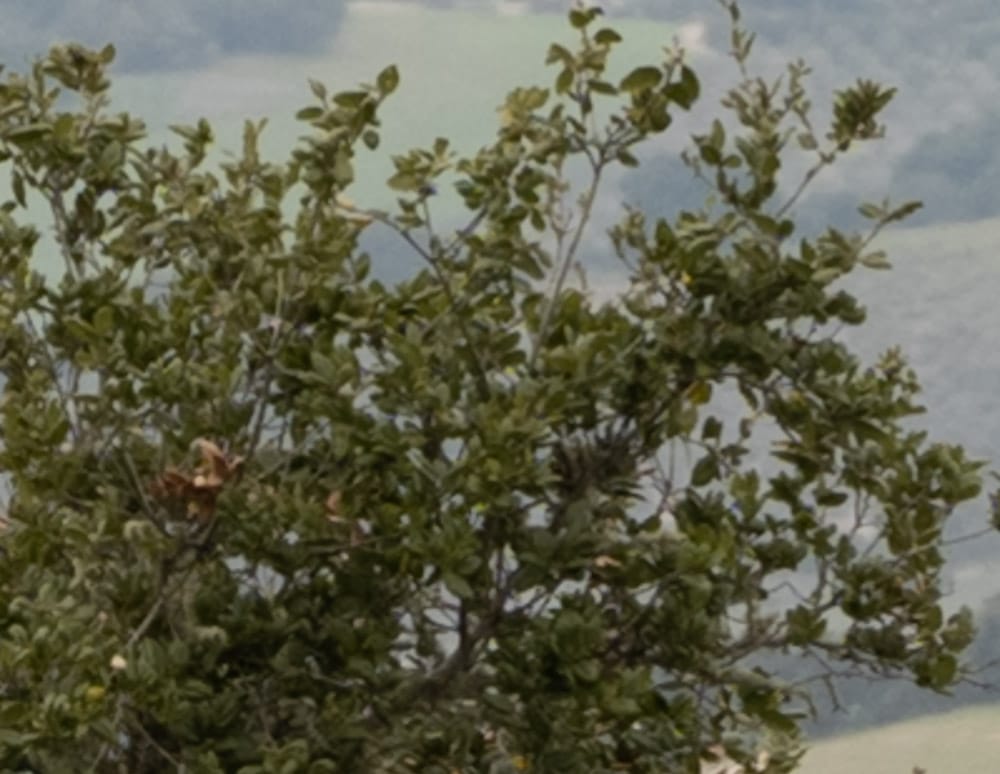
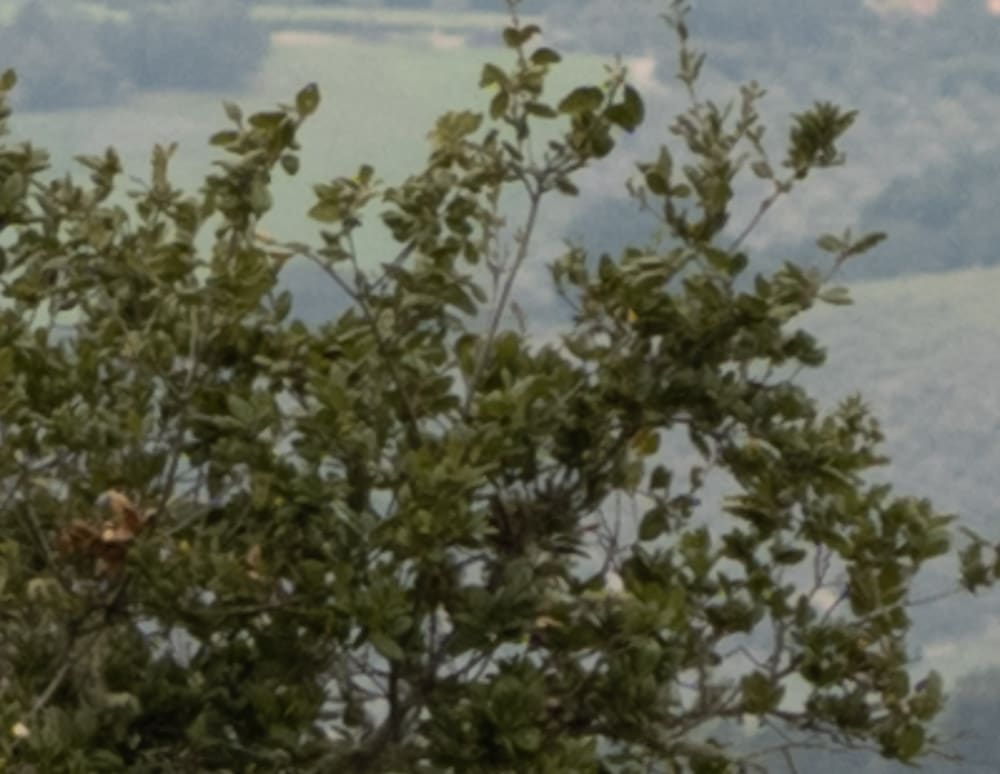
All are good. The 45-100 is maybe a hair sharper.
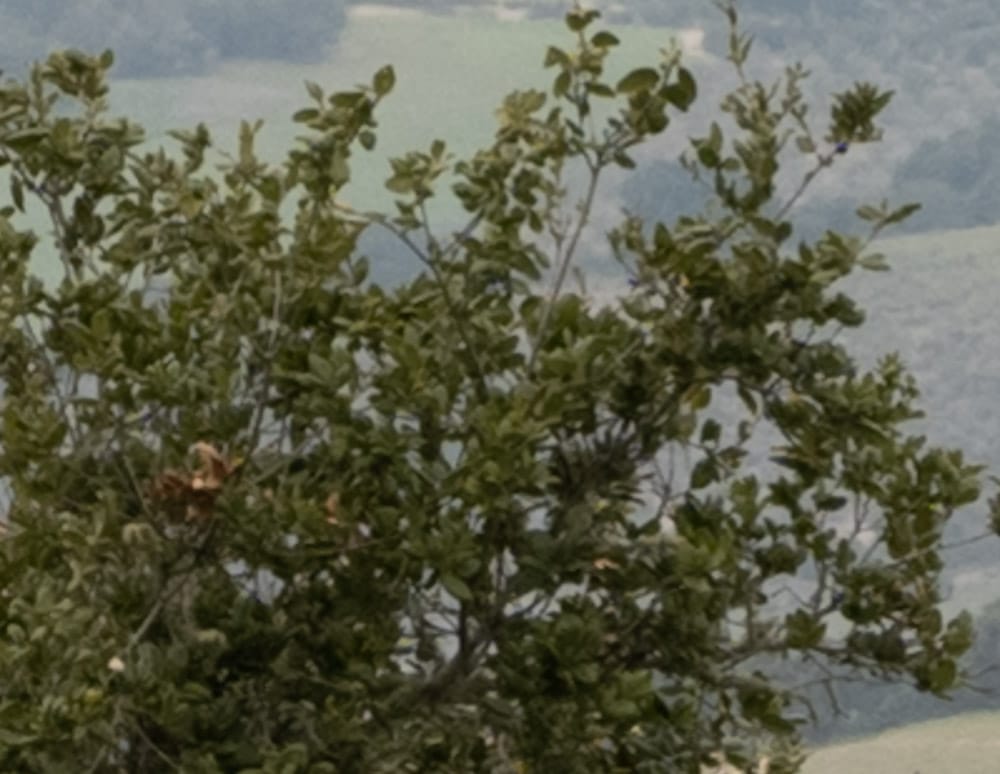
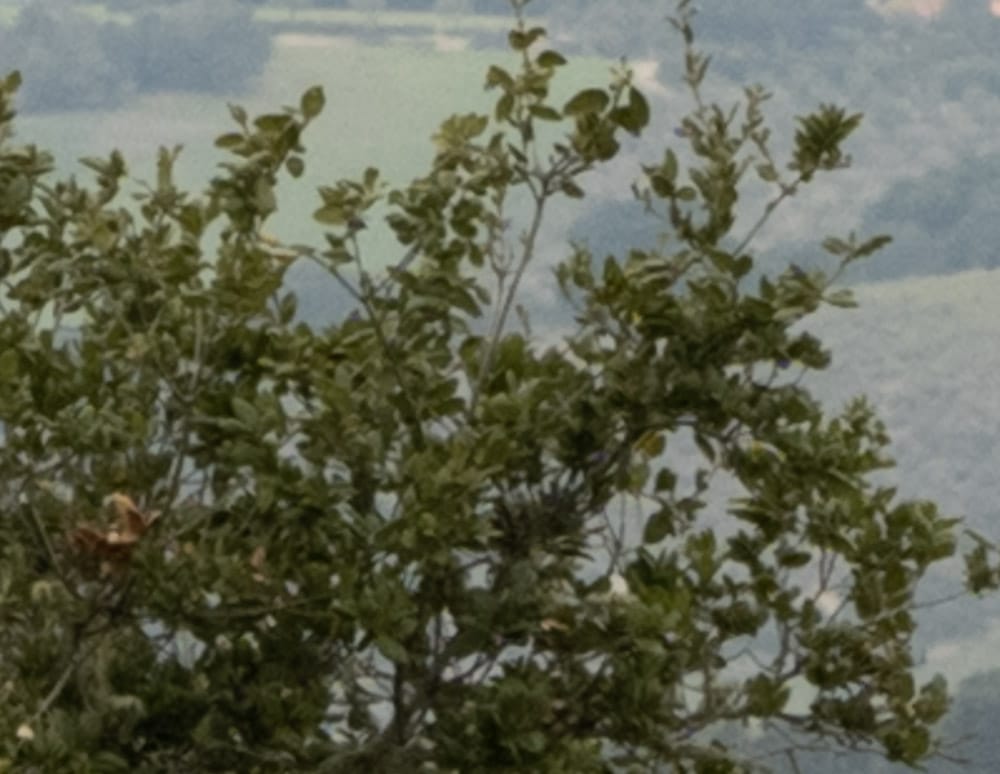
It’s a wash at f/8.
In the upper right corner:
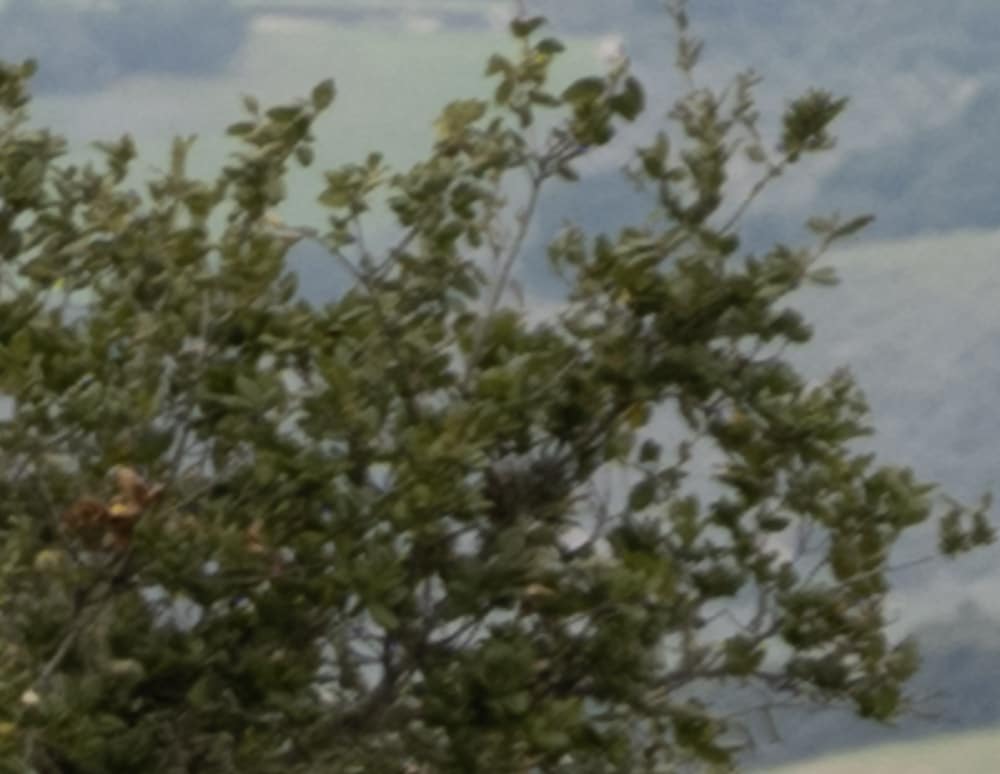
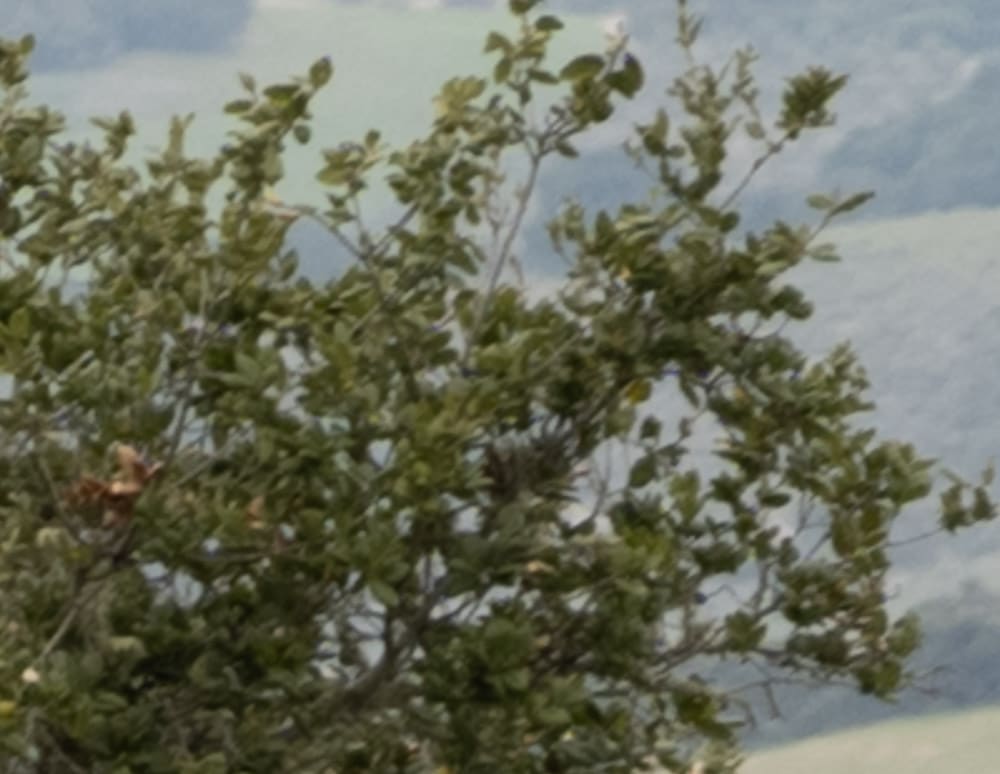
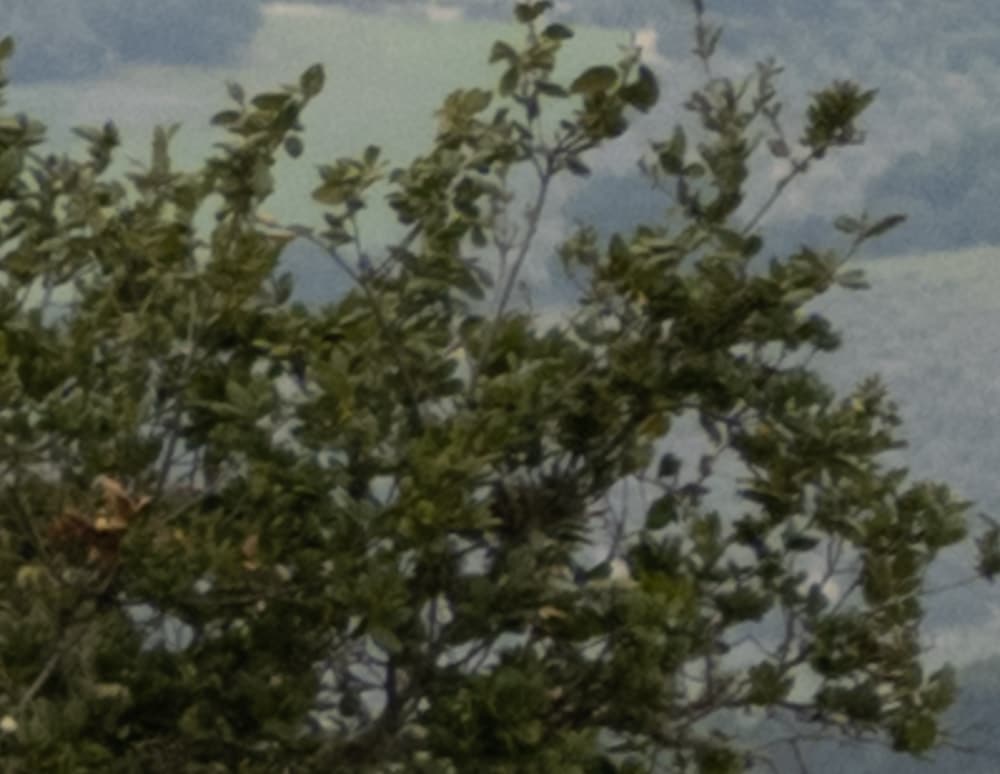
The 45-100 is a bit better.
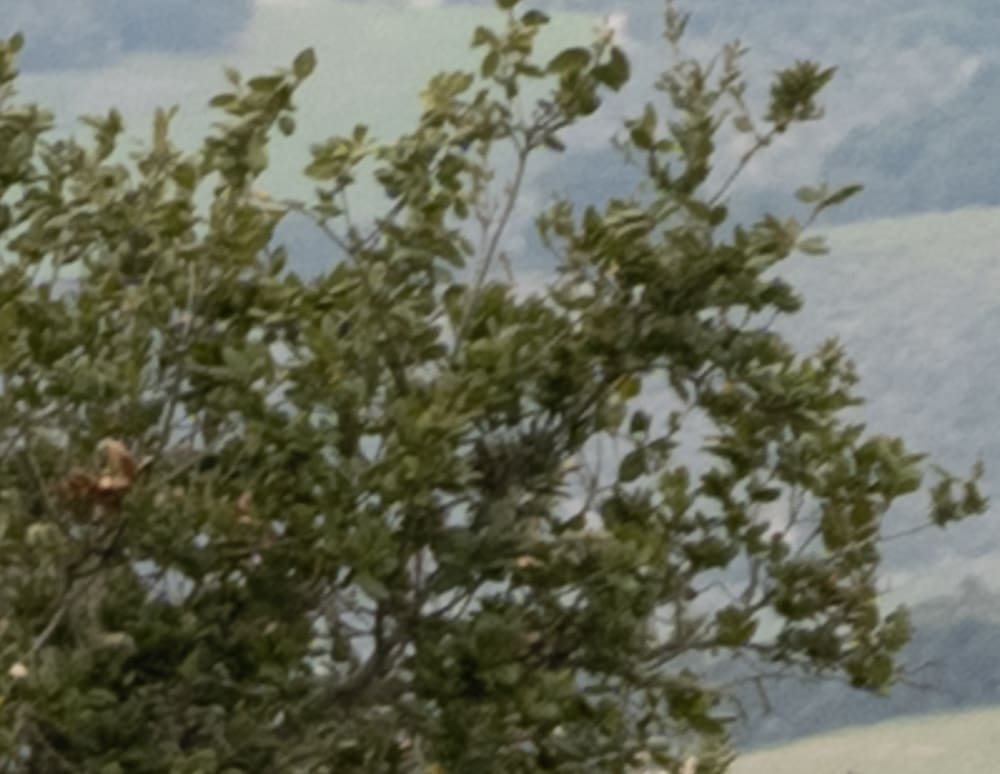
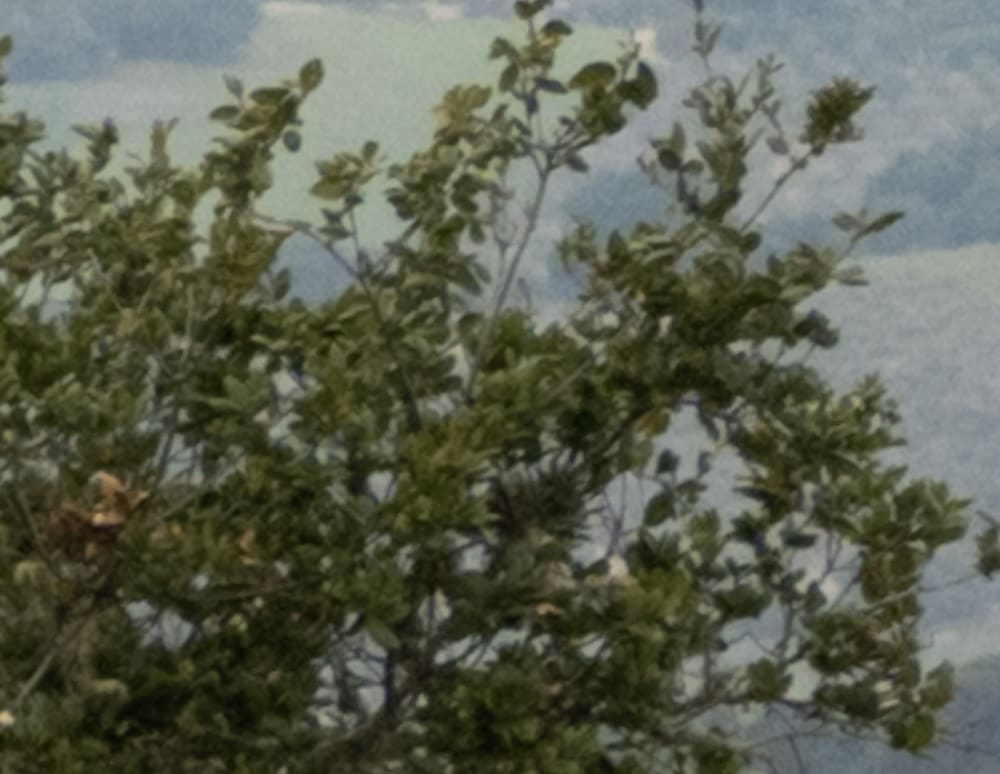
Very similar.
Not much to choose between these, except that the 45-100 is a stop faster and a lot lighter and smaller. 100 mm is the 100-200’s best focal length, and it may be the 45-100’s worst one. Even so, the 45-100 is at least as sharp as the 100-200 at 100 mm. It looks like all these images could take more sharpening.
No comments yet on your last three posts, from anyone? No one interested in zoom lenses on a 100 MP camera?
Seriously, though, Jim, I’m wondering if there might not actually be something to my flippant observation. Perhaps most people willing to spend the cost and carry the size and weight of the 100 MP Fuji are intent on maximizing quality, and therefore will stick with primes.
One other observation, though not a Fuji owner, I do like that for the 45-100mm, Fuji has gone somewhat longer on the short end (~ 33 or 37mm FF-equivalent, depending on whether calculating based on the short or long side of the frame), and longer (~ 82mm FF-eq, based on the long side), compared to the 24-70mm zooms that are common for full-frame. Presumably better quality from truncating the short end, and the bit extra on the long end would be useful for a slightly flatter perspective. (I wish Sony or Sigma or Tamron would produce a top-quality zoom of about 30/35 – 85/90mm for the FE mount).
Though you’re testing it on landscape, I wonder if the 45-100mm might actually be more useful for people photography — environmental to head-and-shoulders portraits, wedding, event, and fashion? Does the camera have eye focus? Is response and focus fast and accurate enough for people photography?
Undoubtedly. Travel, too, if you are enough of a packhorse to do travel photography with medium format.
Yes, and yes, although the richness of focusing options, sophistication of algorithms, and speed of operation aren’t up to modern top-drawer full frame camera standards.
I have an opposite opinion. I think that the Fuji zooms are absolutely worth buying; in fact I am using almost only the zooms on the GFX100 (32-64 and 100-200) and the primes are mostly staying at home except for the 23.
They are very very good, and if you want maximum quality you will use a tripod setting them at f/8 or 11 in the first place, either on field or in the studio. Used wide open for portraits.. well at that point you won’t care too much for corner sharpness but look more for subjective rendering qualities related to the lens and the format.
As a final note, of course I personally don’t go hiking with the GFX100 and 2 zooms, but occasionally went for a mountain walk with the camera and 32-64 only, and that’s a very convenient combo.
Michele
Thanks very much for doing these tests. As a long time Fuji X-series user who has just purchased the 50R and 32-64 (23mm and not sure what else to come) this information is invaluable for my $0000 next spending choices. Really appreciatd!
Jim, I hope your health has improved? I have changed from using primes opting for the versatility of using: the 20-35, the 45-100 and the 100- 200. They’re all stunningly sharp and provide great coverage for my landscape work. However, the 120macro prime is impossible to beat! Best Jack Dykinga
My copy of the 100-200 appears to be soft on the long end.